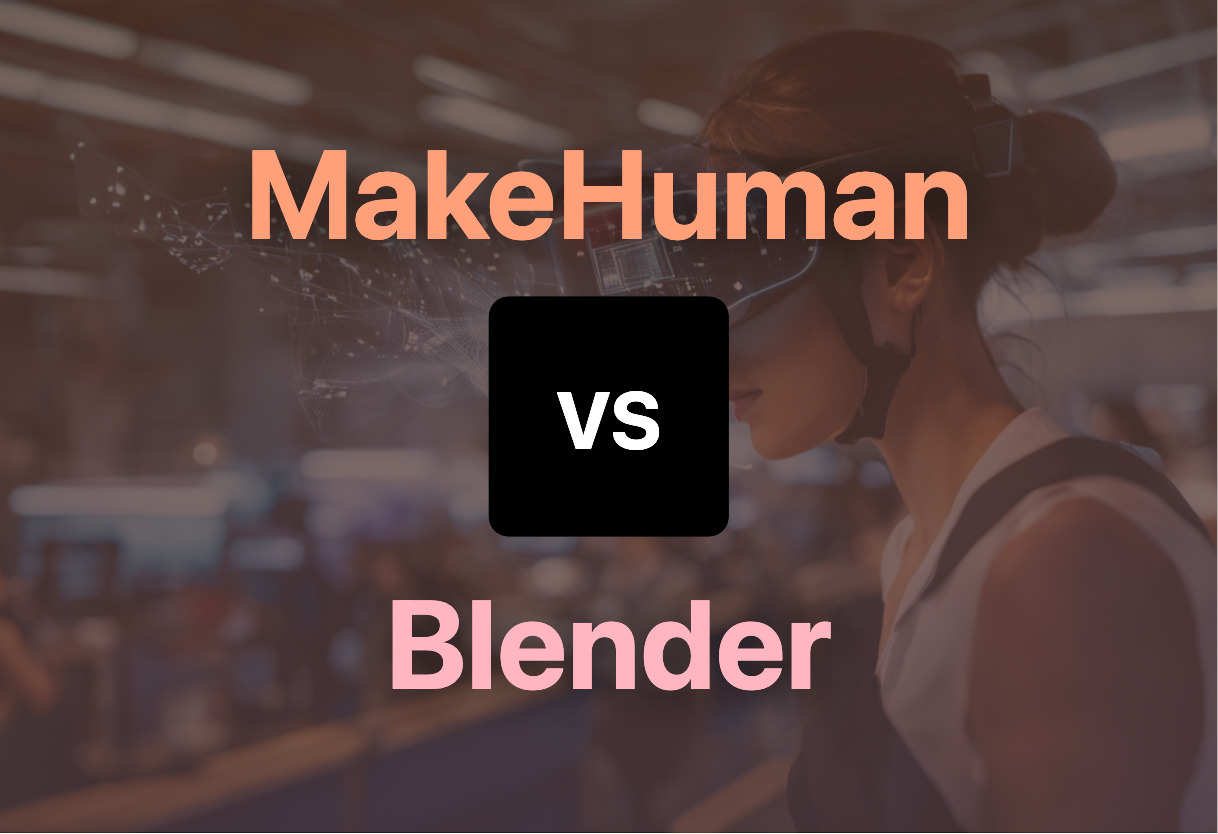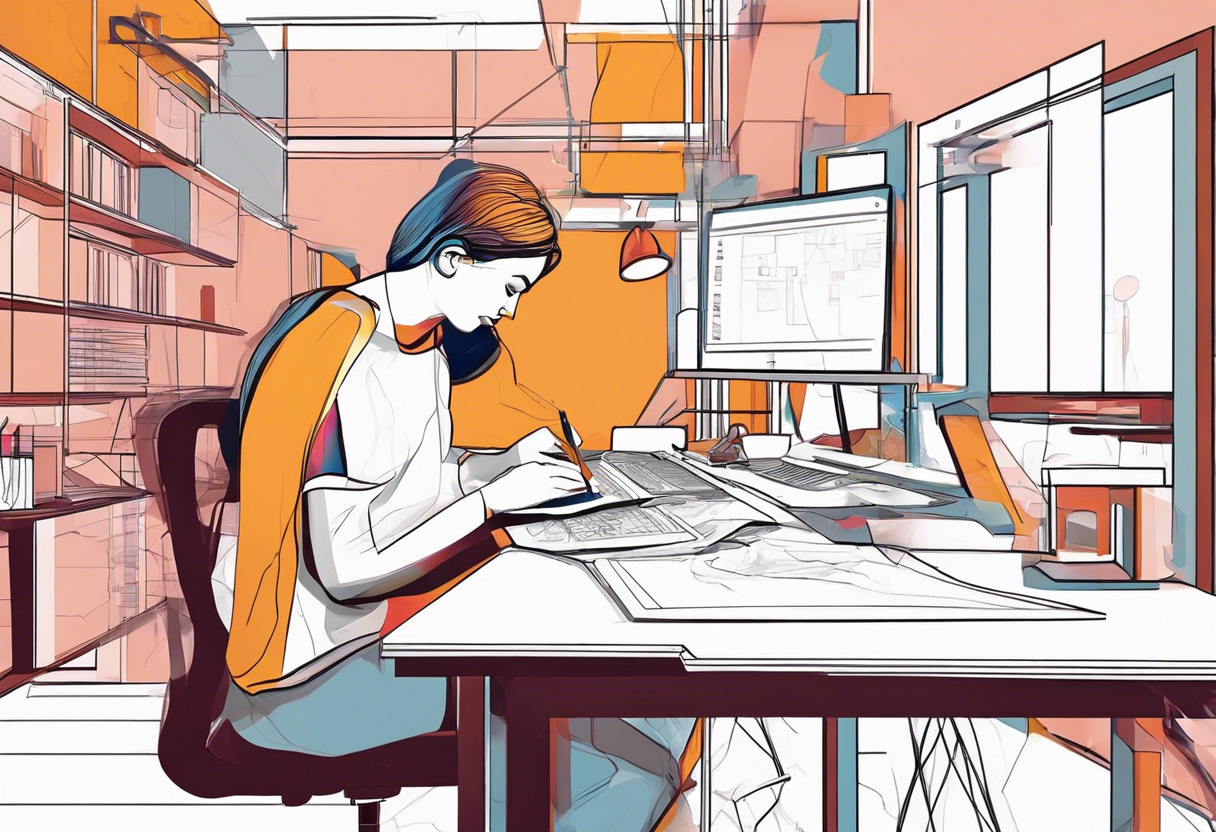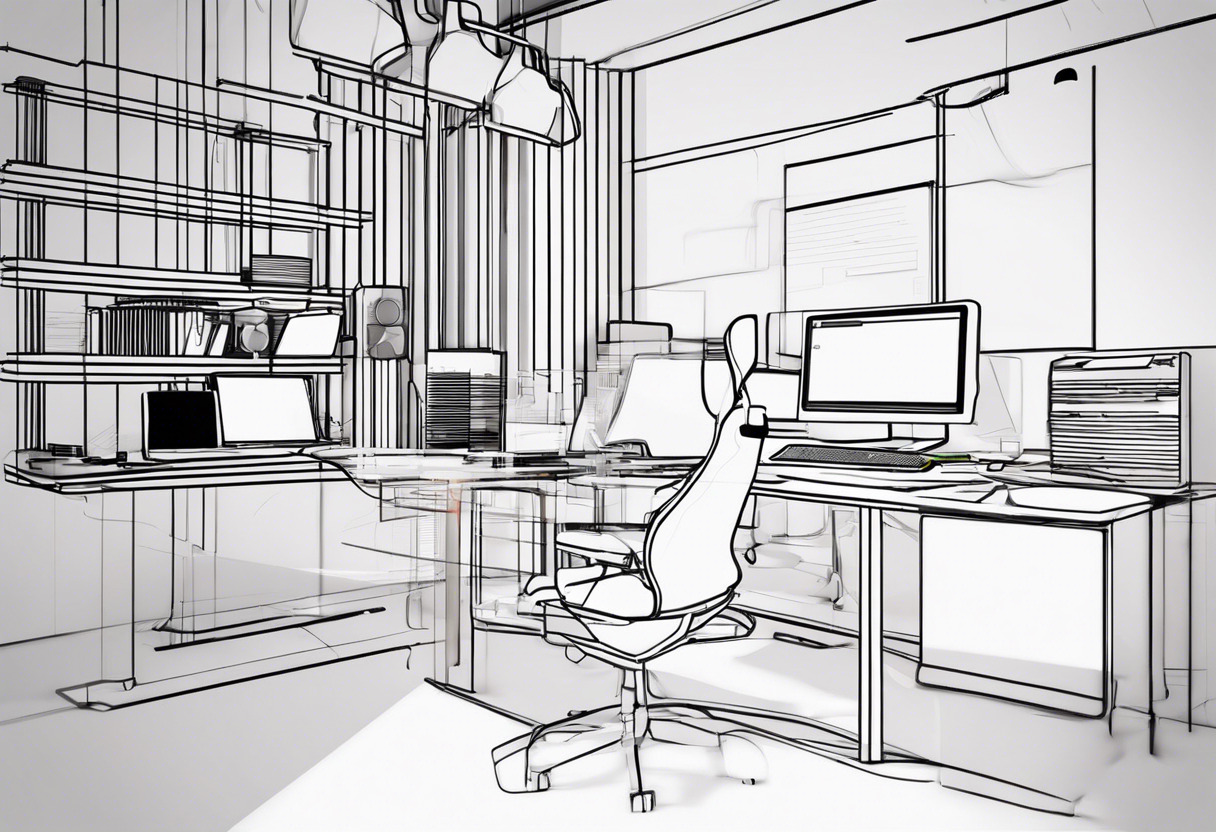Given the choice between MakeHuman and Blender, MakeHuman stands out for rapid customized 3D human model creation, while Blender offers vast versatility in 3D modeling, animation, and rendering. Novices will appreciate MakeHuman’s intuitive GUI and simplicity, while seasoned developers may prefer Blender’s extensive features and robust community support.

Key Differences Between MakeHuman and Blender
- Coding: MakeHuman uses primarily Python, while Blender is coded in C, C++, and Python.
- Functionality: MakeHuman specializes in human character modeling, while Blender provides broader capabilities including 3D modeling, animation, and rendering.
- Experience Level: MakeHuman’s GUI offers ease-of-use for beginners, whereas Blender’s feature-rich environment caters to advanced users.
- Price:MakeHuman has a starting price of $2 per month, while Blender is free and open-source.
| Comparison | MakeHuman | Blender |
|---|---|---|
| User Interface | Graphical\User Interface along with an innovative GUI for ease-of-use and quick access. | Graphical User Interface. |
| Purpose | Creating virtual humans. Used for professional and academic research pipelines. | Used for animated films, visual effects, art, 3D models, motion graphics, interactive 3D applications, virtual reality. |
| Price | $2 per month. | Free and open-source. |
| Tool Complexity | Specialized in 3D modeling. Basic and advanced rigging character available. | Offers UV mapping, texturing, digital drawing, raster graphics editing, rigging and skinning, fluid/smoke simulators, sculpting, animation, match moving, rendering, motion graphics, video editing, compositing. |
| Language | Python, OpenGL, Qt. | C, C++, Python. |
| Compatibility | Linux, Mac OS X, and Windows. | Linux, macOS, Windows, BSD, Haiku. |
| Features | Allows 3D morphing, optimised model for subdivision surfaces modeling and exports characters/to other software. | Supports Alembic, 3DS, FBX, DXF, SVG, STL, UDIM, USD, VRML, WebM, X3D, OBJ. Blender Game Engine depreciated in 2.8 release. |
| Operators | Run by programmers, artists, academics. | Community-based development, Blender Institute employs 26 full-timers and 12 freelancers. |
| Supported by | Data Collection Östersund AB. | NAN till 2002, community crowdfunding since then. |
| Initial Release | Sometime before 2004. | January 2, 1994. |
| Latest Release | Version 1.2.0 (November 2020) | No information provided. |
| Use Case | Creating a wide range of virtual humans quickly. Utilized in fields like industrial design, biomechanics, biomedical engineering, virtual reality research. | Animation, motion graphics and 3D applications. |
What Is MakeHuman and Who’s It For?
MakeHuman is an open-source tool targeting the creation of virtual humans, making use of a Graphical User Interface to specialize in 3D modeling. It’s renowned for its ability to generate a broad spectrum of virtual humans rapidly and uniquely. This tool focuses on blending human attributes achieved through the manipulation of controls, making it an exceptional choice for 3D artists, game developers, and research professionals across various fields like industrial design, virtual reality, biomechanics, and facial expressions research.

Pros of MakeHuman
- User-friendly Graphical User Interface (GUI)
- Robust library facilitating rapid character creation
- Efficient character exportability to various 3D software
- Integration with Unity and other notable game engines
- Options for both basic and advanced rigging character
Cons of MakeHuman
- Requires understanding of Python language for full functionality
- Could be complex for beginners in 3D modeling
- While the software is free, certain advanced features require a subscription
What Is Blender and Who’s It For?
Blender is a comprehensive free and open-source 3D computer graphics software tool set, designed to aid in the creation of animated films, visual effects, art, 3D printed models, motion graphics, interactive 3D applications, and virtual reality content. Initially released in 1994, Blender has grown into a flexible platform for 3D artists, film producers, game developers, and motion graphic designers. It offers a myriad of functions including 3D modelling, fluid and smoke simulation, soft body simulation, sculpting, animation, video editing, and more.

Pros of Blender
- Extensive list of features for various 3D creations
- Strong community base contributing to its updates
- Ability to work with numerous 3D file formats for import/export
- Availability in 36 languages
Cons of Blender
- Steep learning curve for beginners
- Depreciated Blender Game Engine
- Evee renderer replaced Blender Internal hence might require getting used to
MakeHuman vs Blender: Pricing
An overview of the pricing strategy for MakeHuman reveals a cost-effective model starting at $2 per month while Blender operates on a free and open-source financial module.
MakeHuman
Embodying a truly accessible approach, MakeHuman keeps its framework economical by introducing a fairly low base price at merely $2 per month. This budget-friendly aspect strives to foster inclusivity within the realm of 3D modeling and human characterization, further bolstering the democratization of digital art.
Blender
In direct contrast to other industry players, Blender shatters traditional pricing conventions by attaining the status of a free and open-source tool. This strategic move transcends financial barriers, enabling creators worldwide to access high-grade features for 3D computer graphic creations, irrespective of their monetary constraints.
Choosing Your Virtual Reality Ally: MakeHuman or Blender?
In the digital arena of creating vivid and lifelike 3D models, two titans clash: MakeHuman and Blender. Which should you choose to be your virtual reality partner? It depends on your skills, needs, and goals.
Developers & Game Makers
Blender emerges as a superior choice for developers and game makers. Its comprehensive suite of features, from 3D modelling and rigging to fluid simulation and rendering, offers an all-encompassing platform that can sculpt, animate and interact. The availability of Blender Institute’s full-time team for assistance consolidates its top position.
- Integrates with VR effortlessly
- Open-source and free, reducing overhead costs
- Ubiquitous, leading to a large user base for troubleshooting and collaboration.

Researchers & Academicians
MakeHuman, on the other hand, best serves the niche needs of researchers and academicians studying human behavior, industrial design, and biomedical engineering. Its straightforward GUI and primary focus on creating a range of humanoid characters quickly make it a smart, data-driven choice.
- Tools explicitly designed for anthropometric research
- Customizable base characters and unique topologies for advanced character modeling
- Facilitates facial expressions analysis and visuo-haptic surgical training system development.

Entry-Level 3D Artists
For beginners in 3D artistry, MakeHuman comes ahead with its intuitive user interface and integration with Unity and other game engines. The software, tailored for quick and simplified character generation, eases the learning curve for fresh entrants in the modelling space.
- User-friendly and offers instant accessibility
- Library of skin, eye color, cloth accelerates the character creation process
- Exports to Blender for artists comfortable with the software.

If you aim for an all-encompassing toolkit for intricate projects, choose open-source Blender. However, for rapid, easy-to-use humanoid preparation ideal for specific studies, embark with MakeHuman.
Hannah Stewart
Content writer @ Aircada, tech enthusiast, metaverse explorer, and coffee addict. Weaving stories in digital realms.





